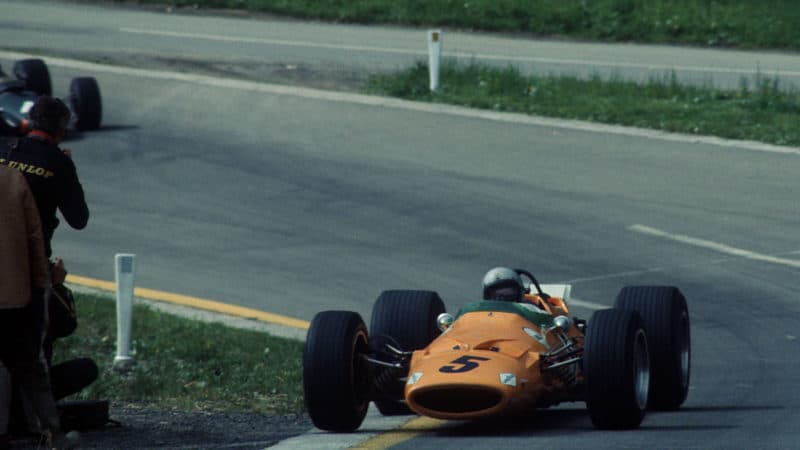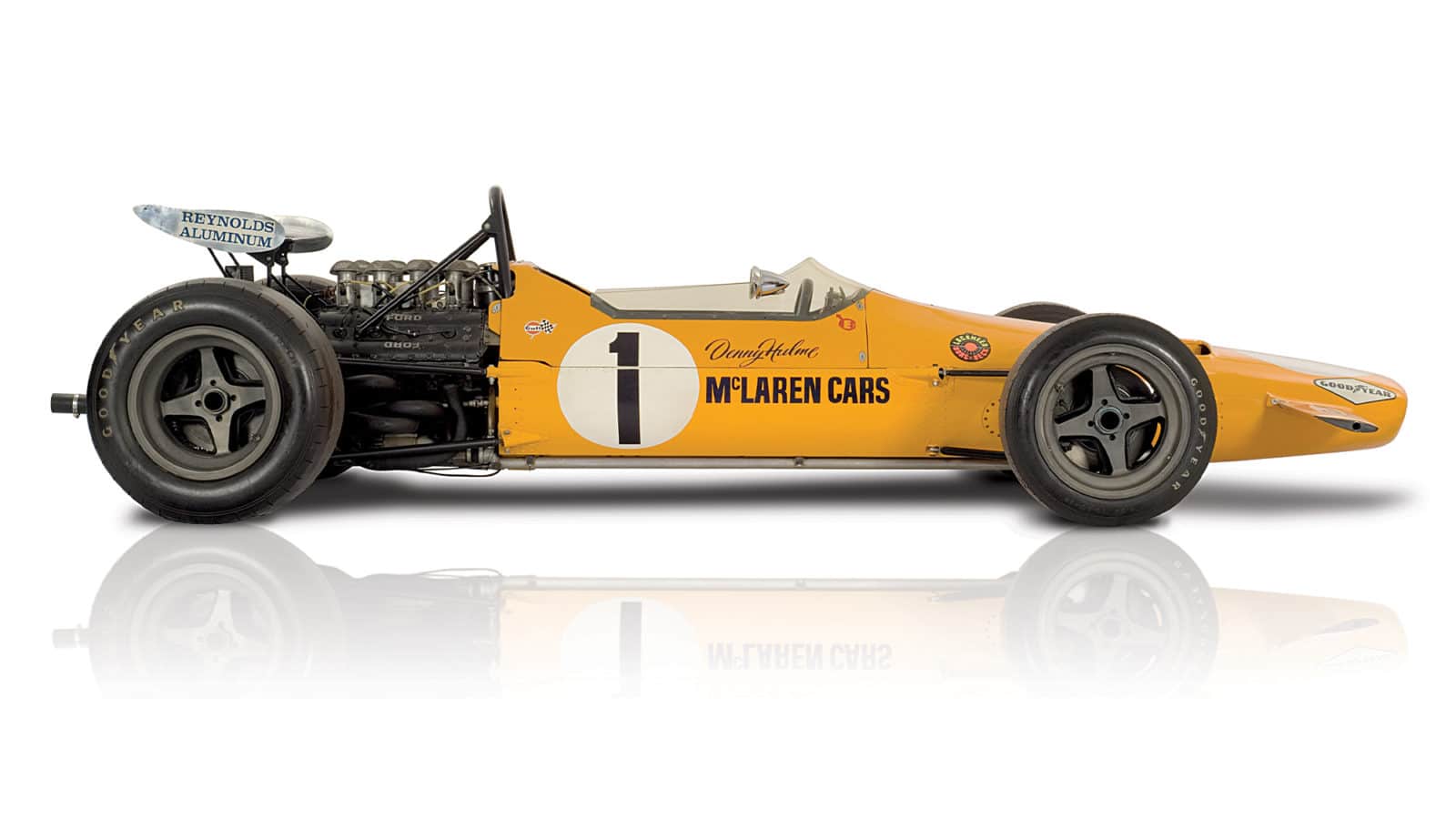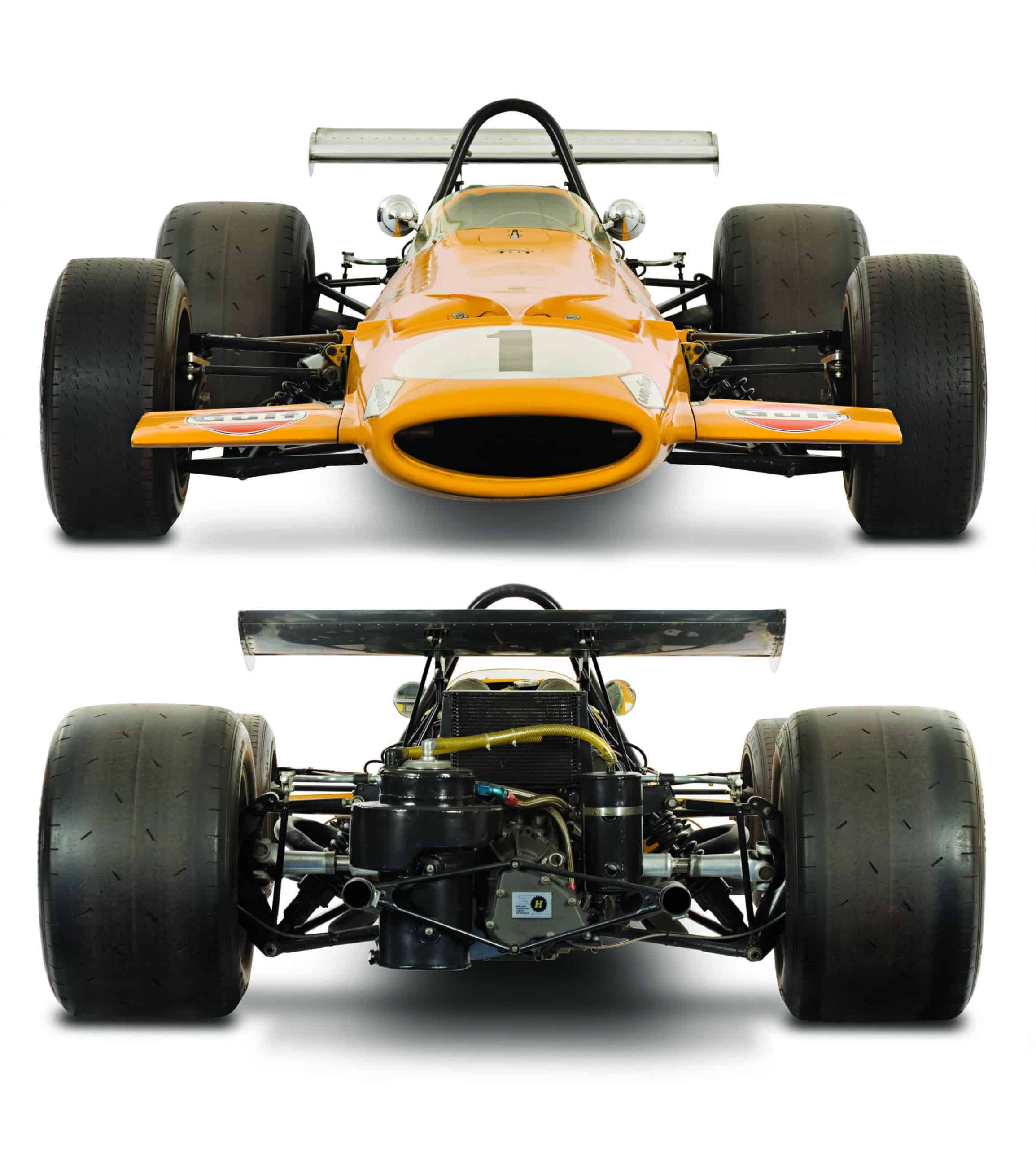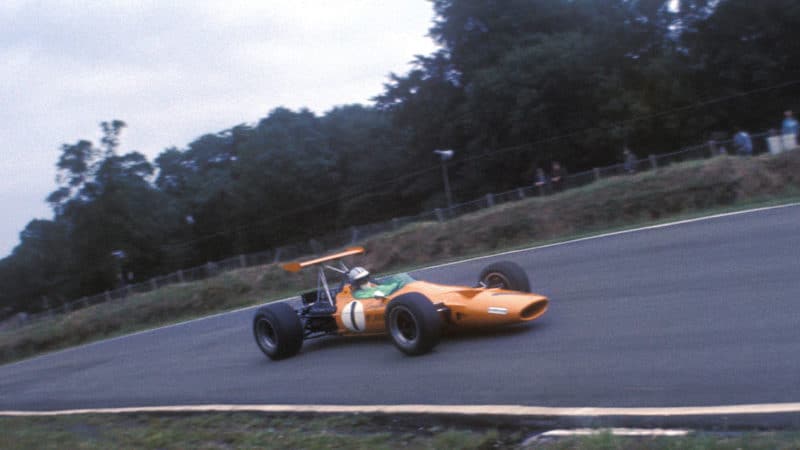This time there was to be no New Zealand fairy tale in Mexico. Hill wrapped up the title with victory for Lotus, as a fuel feed problem left Stewart seventh and Denny crashed out after 11 laps with a suspected broken rear damper. He thus had to be content with third place in the World Championship for Drivers as Bruce finished fifth overall, having taken second place in Mexico. Despite the disappointment, their placings were an indication of the growing strength of the young marque. In its first full season with a pukka F1 car, McLaren had won three Grands Prix and two non-championship races, challenged for the title and finished second (ahead of Matra) in the World Championship for Constructors, just 13 points shy of Lotus.
Bruce’s regular 1968 M7A was sold to South African Basil van Rooyen for 1969; at that year’s Grand Prix at Kyalami he was the fastest local qualifier before brake trouble put him out of the race. He would remain a leading light in South Africa’s domestic F1 series with the car, and was leading after the first three races with 24 points to rival John Love’s 15. But then M7A-1 was destroyed in May in a spectacular accident during testing for the Republic Festival Trophy race at Kyalami when a rear tyre deflated at 160mph.
The other two chassis, M7A-2 and M7A-3, were both updated to B spec (as in pictures) and used alongside the new M7C by the works team throughout 1969. In 1970 Formula 5000 hotshoes Peter Gethin and Reine Wisell had outings in the non-championship races at Brands and Silverstone respectively in M7A-2, before it was sold to privateer Tony Dean who ran it in Formula 5000 in 1971 with a 5-litre Chevrolet.
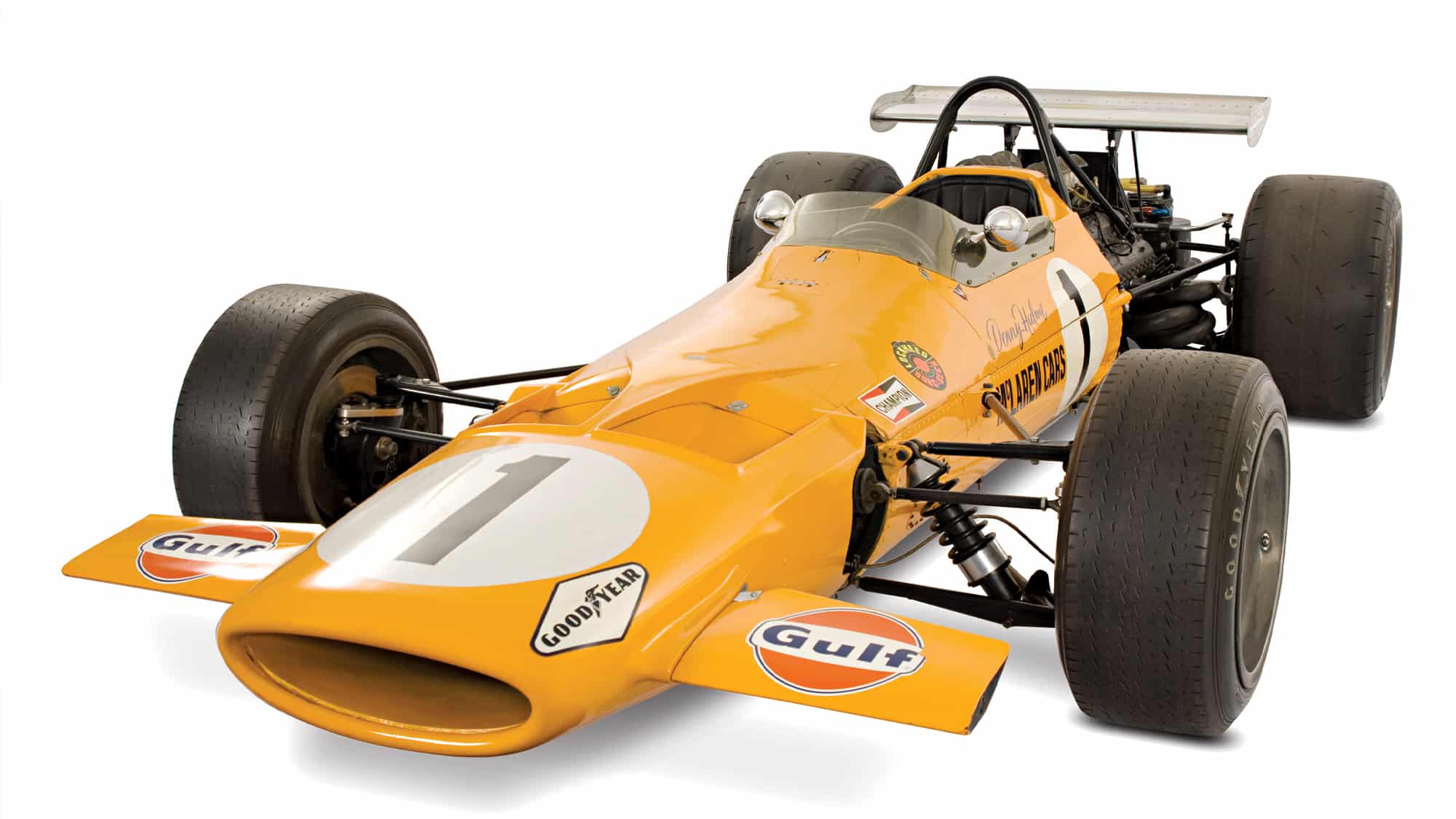
Questions and answers
Martin Whitmarsh
McLaren’s chief operating officer is proud of the team’s history but prefers to look forward
Forty years on, how does the team maintain consistent success?
Any team, to be successful, has to have a passion for winning, has to strive for excellence, has to be competitive in its spirit and approach. Those qualities are inherent in McLaren. In our 40 years, however, the sport and the business have grown significantly. Teams which did not develop the business, engineering, and development process to manage the extended resources were not successful. That is why some great names have disappeared; they didn’t adapt quickly enough.
Is there pressure or pride connected to the McLaren name?
Our concentration is on the future, so whenever we win a race, within hours we are thinking about the next race and the championships that lie ahead. We can’t rest on our laurels. At the same time we are proud of what McLaren has achieved in the past, and we’re not afraid of the expectations and the pressure that brings. Every member of the team expects to win. This has not changed in 40 years.
What about contesting other series?
Nowadays the dominant categories are F1 and Nascar, which are very different. It’s not that one is better than the other; they are different technical, sporting and commercial endeavours. It would be hard to have the same culture spanning those two disciplines. I think McLaren should be proud that it is the only marque to have won at Le Mans, Indianapolis, in Can-Am, and Formula 1 World Championships. As the sport evolves there might be more classic races that have to be conquered, but for the foreseeable future McLaren is going to focus only on F1.
Which victories do you remember best?
The ones I tend to remember are when the World Championships were won because those are the ultimate goal, or moments of greatness, such as Ayrton’s win at Donington in 1993. Also the race just before in Brazil, our 100th victory with Ayrton; 1998 Suzuka, Mika winning the title; 2000 at Spa because of Michael Schumacher’s aggressiveness damaging Mika’s car, followed by Mika’s brilliant overtaking move round Ricardo Zonta one lap later. The most vivid memories are these moments which seem beyond normal human capability.
What does McLaren’s heritage mean to the team?
We are fantastically proud of our roll-call of drivers, the wonderful cars from M1 through to MP4-23, and the wins. It sometimes needs an anniversary like this for the team to stop and take stock of that for a moment and be proud of the team we work for and how far it has come. We should then, of course, immediately resume duties and concentrate on winning the forthcoming race to keep that history going.
Is it important for the car to be instantly quick?
That romantic notion of being quick out of the box is less relevant today. In the past, development was less scientific and the outcome a bit hit and miss, so there was always that feeling of expectation when you first ran a car. If you hit it quick out of the box you would be challenging for championships. Today the competition is closer; even if you are quick out of the box, if you’re not good at continuously developing the car then you will not win any races in the latter part of the year, and therefore no titles.
*****
DSJ on…
Tension at Spa and a deserved victory for McLaren
“Here comes Stewart, one lap to go. Good grief! He’s in trouble. Coasting into the pits. There go McLaren and Rodriguez, racing to win. They are putting petrol in the Matra. It won’t restart. Another battery. The starter motor must be cooked. And here’s Oliver, the Lotus is out of fuel. This is ridiculous, they’ve all miscalculated. Oh Tyrrell, you’ve thrown the race away. It’s restarted. He’ll finish but in fourth. Oliver is away, but that was a lot of smoke from the outer universal joint on the right-hand driveshaft. It can’t possibly last another lap. The Lotus lads couldn’t have seen it. He’s gone, we can only wait. Here’s a jubilant McLaren, the lucky devil, to win like that. It’s justice really, for Hulme should have won. Those new heavy-duty shafts on McLaren’s car are obviously strong enough. That’s amazing, Ickx third on 11 cylinders. Bianchi in the results again. At least the Matra-Matra finished still sounding good. Stewart has made it, but in fourth. Oliver is overdue. That shaft must have broken. What a sea of humanity. The track has become a shambles. Wait for it to subside. There’s McLaren. Good for him to win, and with his own car. Well done, congratulations. You didn’t know you’d won? Not until Phil Kerr greeted you in the paddock. But you waved your arm as you crossed the line. Pleased to finish second! It was some race. Always is at Spa. The car felt great on full tanks, not so good on empty, bit scary at times; the narrow rear track worked all right. Looked narrow compared to the BRM. It’s true, Stewart ran out of petrol on the last lap. Don’t laugh McLaren, that’s not nice. I know you are happy, so are Goodyear, Shell, Champion, Ferodo and the others. Wonder why Hulme isn’t smiling? You think he’d be pleased that his guv’nor has won. Teddy Mayer and the lads are happy. Makes it all worthwhile. And the Belgian GP is a real Grand Prix: 236.797kph average for one hour and 40 minutes; 147mph average in round figures. That’s motoring. Drink to the health of Goodyear? Yes, I’ll do that, they do win the big ones, don’t they? Here’s to Grand Prix racing; you can’t beat it.
